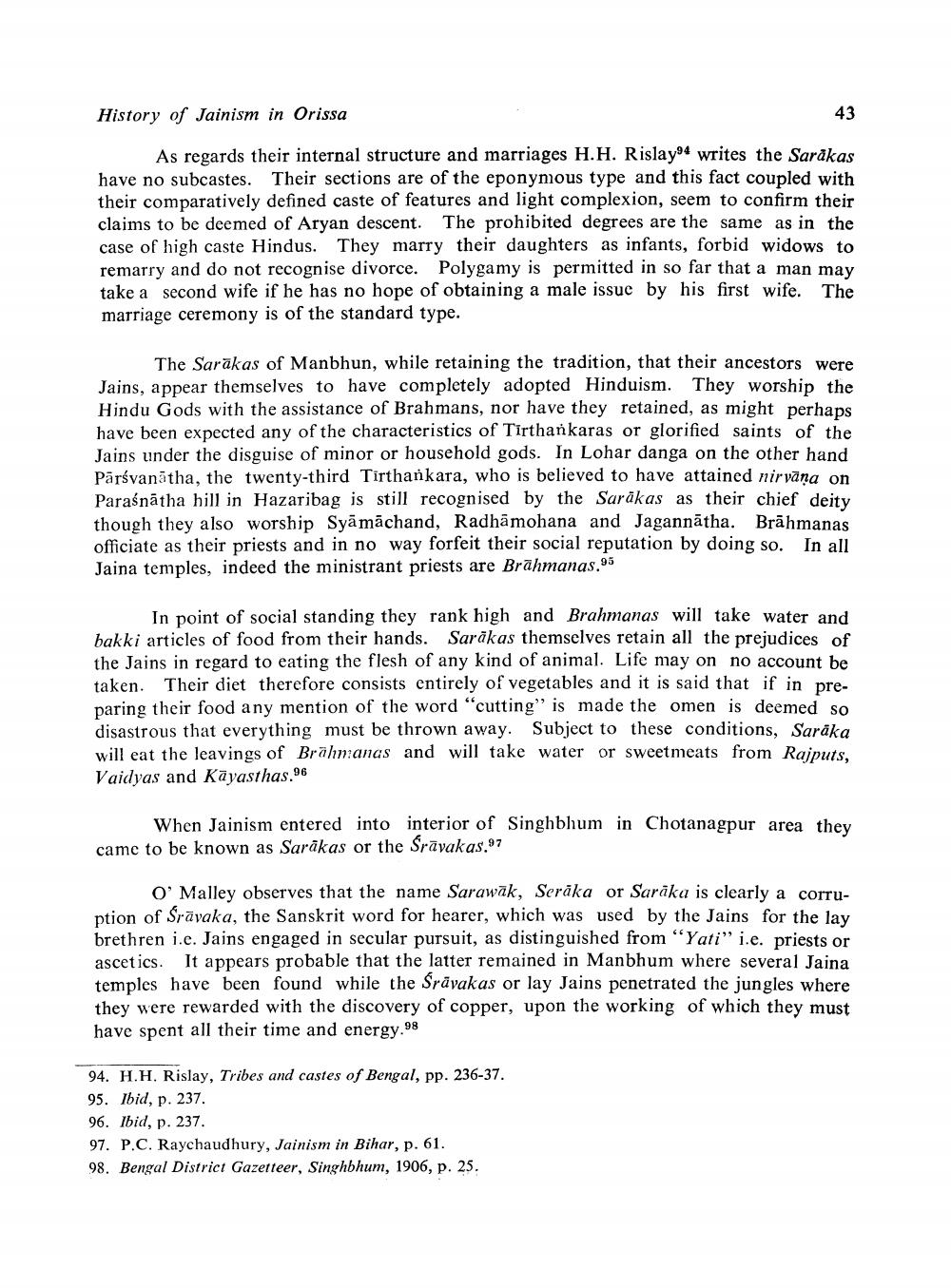________________
History of Jainism in Orissa
As regards their internal structure and marriages H.H. Rislay writes the Sarakas have no subcastes. Their sections are of the eponymous type and this fact coupled with their comparatively defined caste of features and light complexion, seem to confirm their claims to be deemed of Aryan descent. The prohibited degrees are the same as in the case of high caste Hindus. They marry their daughters as infants, forbid widows to remarry and do not recognise divorce. Polygamy is permitted in so far that a man may take a second wife if he has no hope of obtaining a male issue by his first wife. The marriage ceremony is of the standard type.
43
The Sarākas of Manbhun, while retaining the tradition, that their ancestors were Jains, appear themselves to have completely adopted Hinduism. They worship the Hindu Gods with the assistance of Brahmans, nor have they retained, as might perhaps have been expected any of the characteristics of Tirthankaras or glorified saints of the Jains under the disguise of minor or household gods. In Lohar danga on the other hand Pār vanitha, the twenty-third Tirthankara, who is believed to have attained nirvana on Parasnatha hill in Hazaribag is still recognised by the Sarokas as their chief deity though they also worship Syämächand, Radhämohana and Jagannatha. Brahmanas officiate as their priests and in no way forfeit their social reputation by doing so. In all Jaina temples, indeed the ministrant priests are Brahmanas,95
In point of social standing they rank high and Brahmanas will take water and bakki articles of food from their hands. Sarākas themselves retain all the prejudices of the Jains in regard to eating the flesh of any kind of animal. Life may on no account be taken. Their diet therefore consists entirely of vegetables and it is said that if in preparing their food any mention of the word "cutting" is made the omen is deemed so disastrous that everything must be thrown away. Subject to these conditions, Saraka will eat the leavings of Brahmanas and will take water or sweetmeats from Rajputs, Vaidyas and Kayasthas.
When Jainism entered into interior of Singhbhum in Chotanagpur area they came to be known as Sarākas or the Sravakas.97
O'Malley observes that the name Sarawak, Serāka or Saraka is clearly a corruption of Sravaka, the Sanskrit word for hearer, which was used by the Jains for the lay brethren i.e. Jains engaged in secular pursuit, as distinguished from "Yati" i.e. priests or ascetics. It appears probable that the latter remained in Manbhum where several Jaina temples have been found while the Sravakas or lay Jains penetrated the jungles where they were rewarded with the discovery of copper, upon the working of which they must have spent all their time and energy.98
94. H.H. Rislay, Tribes and castes of Bengal, pp. 236-37.
95. Ibid, p. 237.
96. Ibid, p. 237.
97. P.C. Raychaudhury, Jainism in Bihar,
p. 61.
98. Bengal District Gazetteer, Singhbhum, 1906, p. 25.




